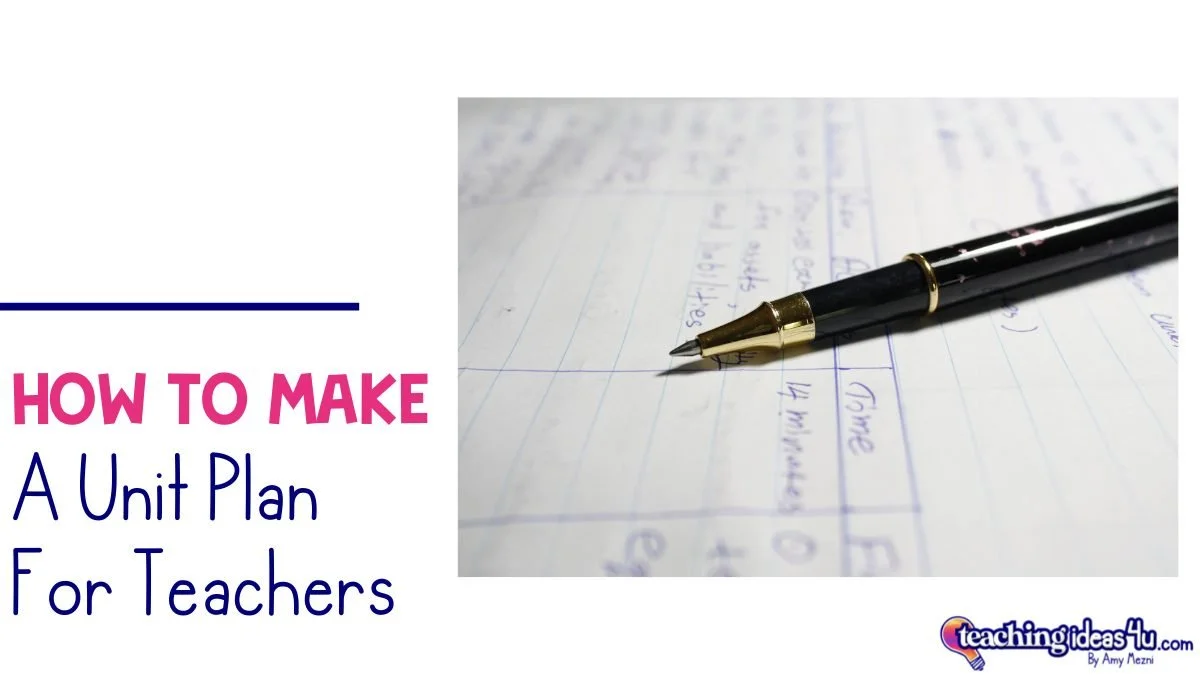How To Make A Unit Plan
Often, teacher training programs focus on having student teachers write lesson plans. It makes sense, because they usually are teaching a lesson or taking over a class for a few weeks with supervision. But knowing how to write a lesson plan will only take you so far.
Why You Need To Plan Units
If you write a lesson for every period without having an overarching structure, you end up with a disjointed curriculum. It’s like planning a trip day by day once you get there - each day may be great, but you might not pack some things you needed and the final trip may end up missing things you wanted to do.
Not to mention planning individual lessons takes a lot more time than planning a unit. Yes, the unit takes more time upfront, but it saves you hours in the long run.
Finally, having a unit gives you peace of mind. You won’t go home every day panicking over what you should be teaching next.
Getting Started
Units, like lessons, should always be based on the course standards. Be sure to print a copy of your standards so they are easy to reference while you plan.
Your unit should have a focus - in social studies, it might be a topic like the American Revolution, while in math it might be adding fractions. Mark all the standards connected to your topic.
Some standards are core standards, which are standards that are central to the unit. Other standards complement the core standards. For example, a standard might be to explain significant events leading to the American Revolution. Another might be to identify groups and individuals that played a role in the Revolution. I would focus on the events as a core standard because the lessons will discuss the people involved in those events - which would cover the second standard.
Once you identify the core standards, you have a framework for your lessons - those are the standards that you will use to create the lessons that form the unit.
Think of lessons like chapters in a book. The individual chapters might be interesting on their own, but they will take on new meanings and importance when read together.
Decide The Ending
Have you ever tried to create something without a clear idea in mind of what you wanted? Sometimes you end up with something brilliant. Other times, you keep throwing things together and end up with a mess - or just give up completely.
Unit planning is like that - you have to know where you want students to end up. Otherwise, your unit could end up being lessons just thrown together. Ask yourself these questions:
What should students know at the end of the unit (see standards)?
What skills should students have mastered? (Your standards may include skills.)
How will students demonstrate their mastery of the content and skills?
What criteria will you use to determine mastery?
Knowing what students need to learn will help you create a lesson sequence that builds their knowledge and skills to be successful on your selected outcomes.
Planning The Lesson Topics
Now that you know your final destination, you need to figure out what steps you need to take to get there.
What topics and skills do students need to learn?
What skills and knowledge do they already have that you can build on for this unit?
In what order should you teach the content and skills?
Which skills and content pair together nicely?
Go back to the core standards you identified. They will be your lesson building blocks. I recommend writing them out in order with spaces in between. Which skills can you add to those lessons? What skills do they need to learn before they can master the end skill? I note those under the lesson standards.
For example, perhaps I have identified writing an informational essay as the final assessment. In order to do that successfully, students have to both know the content and know how to write an informational essay. I need to figure out where my students’ writing skills are, then plan lessons to build them up to a complete essay.
You may find that students are missing skills you thought they had as you teach the unit - and that is okay! You can differentiate the lessons by adding in mini-lessons. Just make notes on your unit so you can remember next year what you had to change.
Create The Plan
The last step before you start creating the lessons is creating the overall plan. I use the skeleton outline from the last step to flesh out the general lesson ideas.
One standard may require multiple lessons to teach, especially if you are integrating a skill with it. A final plan may look more like an outline with multiple sections than a series of individual lessons.
In what order will you teach the topics? Do you need to move any?
Which complementary standards will you pair with the core standards?
Does your outline cover all of your standards?
What overarching question ties your unit together? Use this for your essential question to just students a focus to their learning.
At the end of this step, you just want to have a solid framework for your unit - where you need to start, the information and skills you need to teach along the way, and where you will end. All of the specifics you will figure out when you plan the individual lessons.
Once you have the steps in your unit, you can begin working on the individual lessons. Although it seems like an unnecessary step, the unit plan will make your lessons cohesive and will help ensure that your students are learning the grade-level standards.

